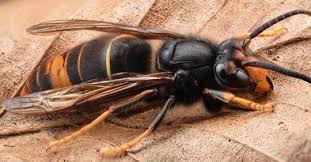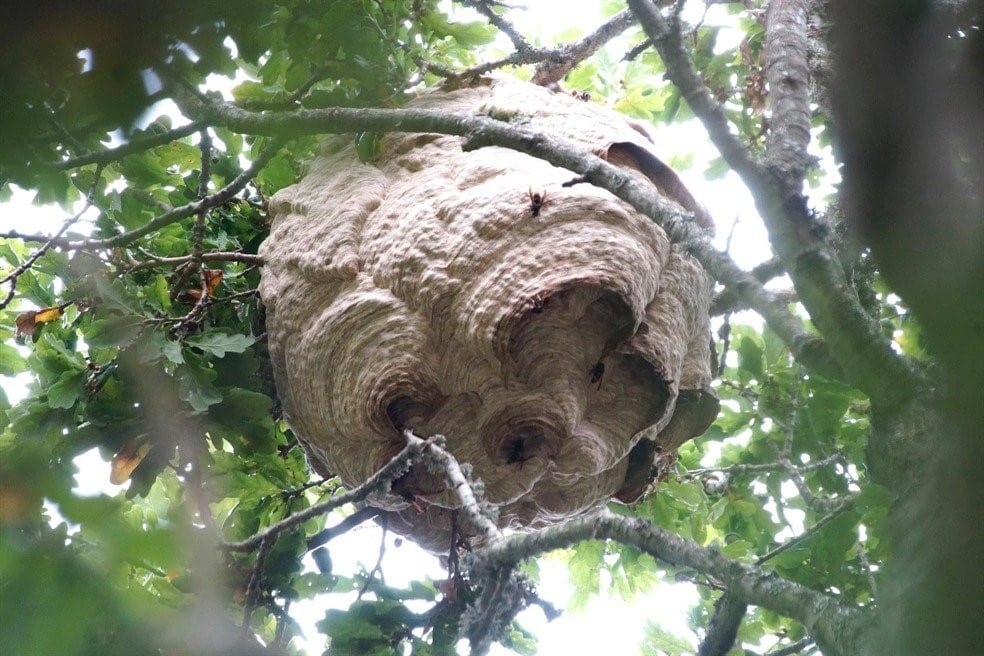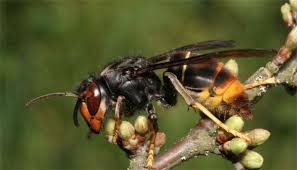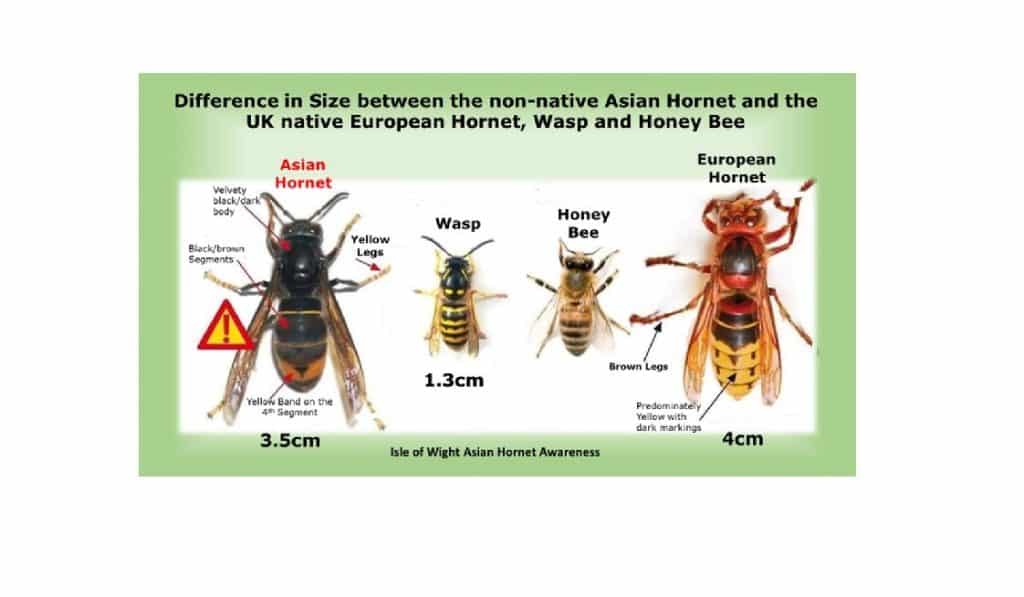
The Asian Hornet (Vespa velutina) is an invasive non-native species from Asia. If you find one you must report it (see below). It arrived in France in 2004 and has spread rapidly through continental European countries and is threatening to take hold in the UK.
Early sightings and accurate identification are essential to contain their spread in the UK, which can be as much as 60km per annum. For every nest not destroyed, it is likely that between 4-6 new nests (creating c.6,000 hornets each) will be established within a 1 kilometre radius.

Nests can be high in trees and difficult to spot until leaf fall in the autumn but also have been found at lower levels in hedges and buildings. DO NOT APPROACH these nests without adequate protection as Asian Hornets are very defensive near their home.
Key identifiers

©BBKA.org.uk
- 30mm long for Queens
- Workers are 25mm
- Dark velvety abdomen with lighter 4th segment
- Yellow tips to legs
- Orange face
- Hovering in front of hives (can be caught with a net)
- Day flying species (ceases at dusk unlike our native European hornet)
- Queens come out from hibernation February / March / April
- Active April-November (peaking August & September)
Reporting the Asian Hornet
Please report any suspected sightings (with a photo) via the Asian Hornet Watch app or on this AH report form, thanks.
Asian Hornet (Vespa velutina) versus our native European Hornet (Vespa crabo)
Our native hornet is slightly larger, with more yellow on its abdomen, a light brown face and light brown (NOT YELLOW) legs. It is relatively harmless to our honeybees and a beneficial pollinator.

Links to more information:
Familiarise yourself with the Asian Hornet using our useful guides:
Asian hornet information pages of BeeBase
Asian hornet ID sheet